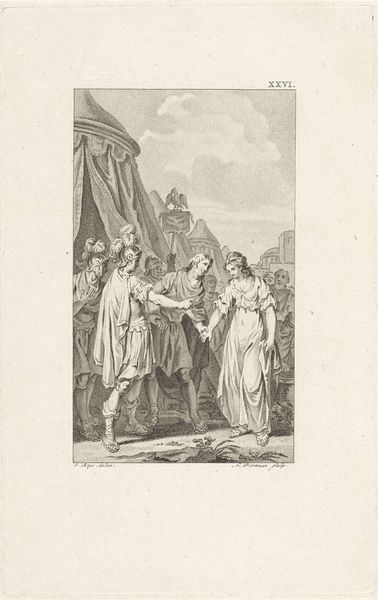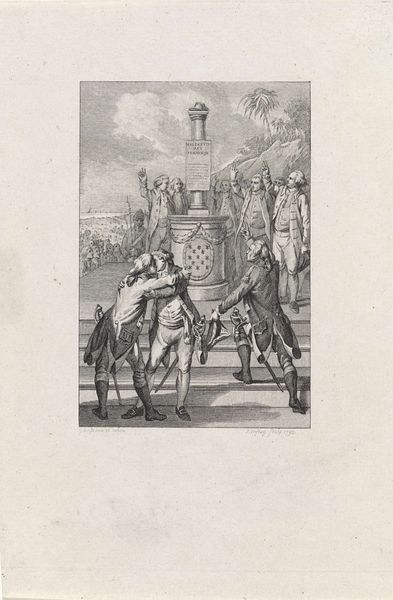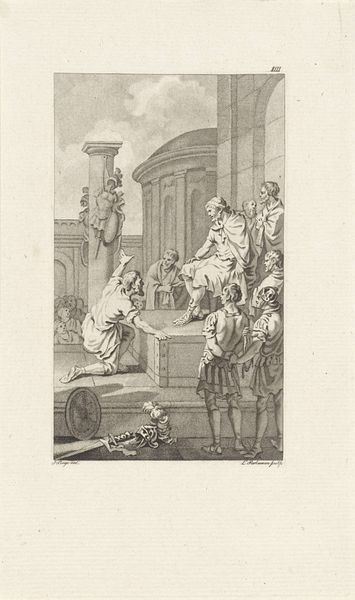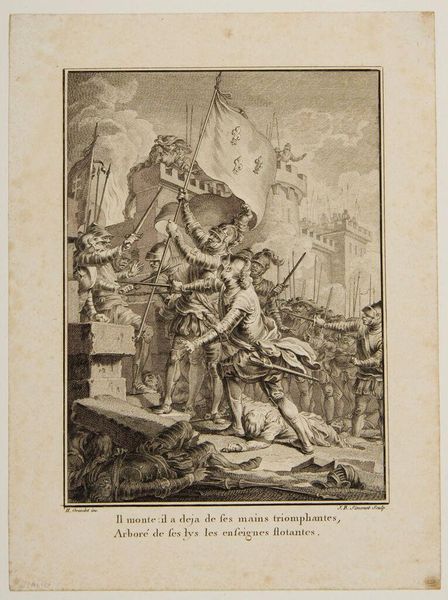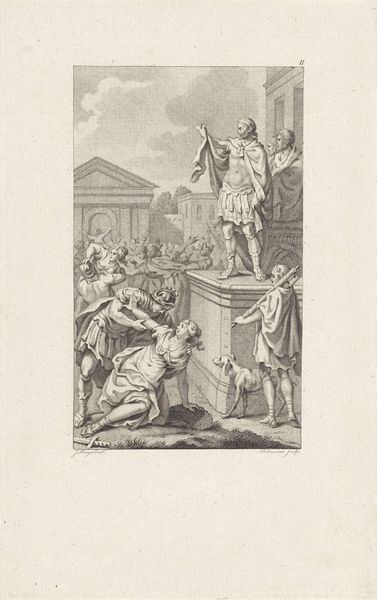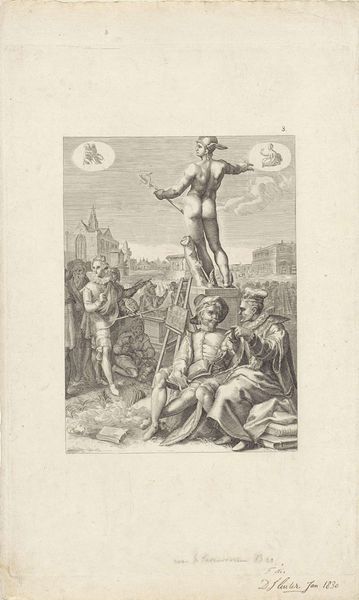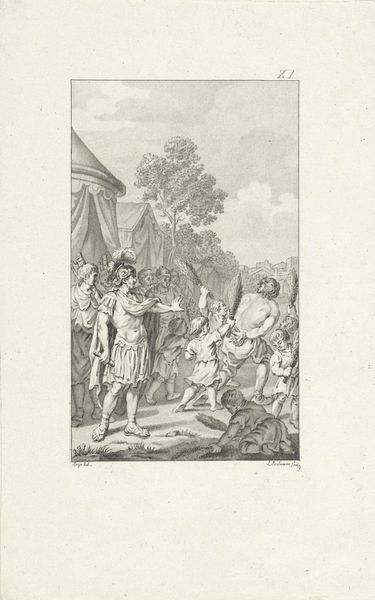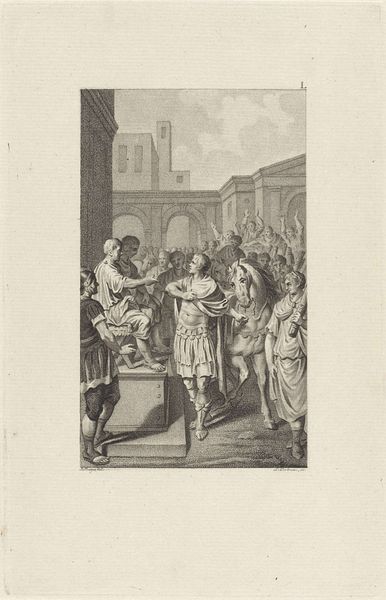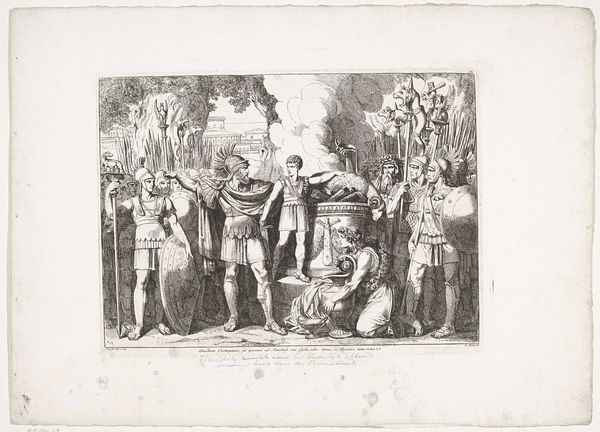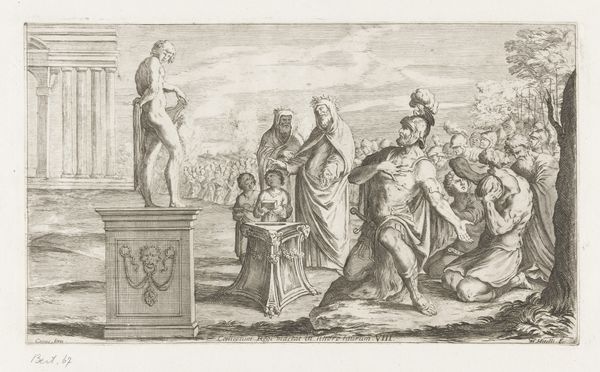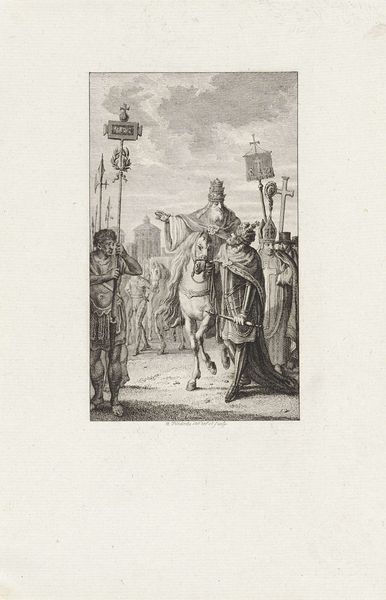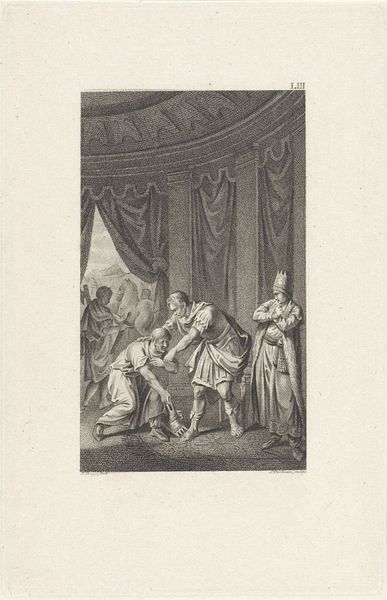
Dimensions: height 243 mm, width 157 mm
Copyright: Rijks Museum: Open Domain
Editor: Here we have Reinier Vinkeles’ 1799 engraving, "Marteldood van Petrus aan het kruis," or "The Martyrdom of Saint Peter on the Cross." The inverted crucifixion is... striking, to say the least. It makes me uncomfortable to look at. How do you interpret this work? Curator: The discomfort is understandable, and, in many ways, precisely the point. Consider the social and political landscape of the late 18th century, particularly the challenges to religious authority in the wake of Enlightenment ideals. This image, created during a time of revolution and upheaval, forces us to confront the brutal realities of power, then and now. What does it mean to depict a foundational figure of the Church being subjected to such violence by the state? Editor: So, it's not just a historical depiction, but also a commentary on power dynamics? Curator: Exactly. The upside-down crucifixion challenges established hierarchies, both religious and political. Vinkeles, whether consciously or not, participates in a discourse questioning absolute authority. Think about how the figure of Peter, usually presented as a symbol of stability, is here rendered vulnerable, subverted. It opens up possibilities for resistance and re-evaluation of traditional narratives. What feelings does it evoke in *you*? Editor: Thinking about it that way, I see it as a powerful statement about resisting unjust authority, even in the face of death. It also highlights the violence inherent in systems of power. Curator: Precisely. And the engraving, as a readily reproducible medium, allowed these challenging ideas to circulate widely. By examining the Martyrdom of Saint Peter, we gain a lens into the complex negotiations between faith, power, and resistance during a revolutionary period. Editor: This conversation shifted my perspective. It's more than just a religious scene; it is loaded with complex social implications about the struggle against tyranny and control. Thank you for unveiling a more critical and complex point of view. Curator: And thank you for prompting the dialogue! It is in these critical encounters with art that true understanding begins to emerge.
Comments
No comments
Be the first to comment and join the conversation on the ultimate creative platform.
